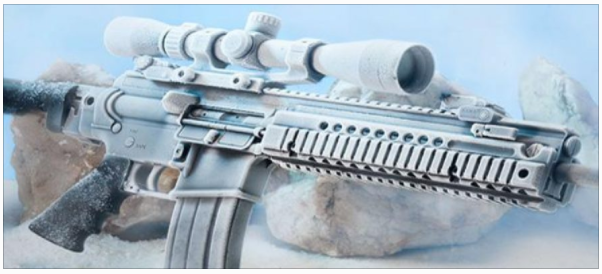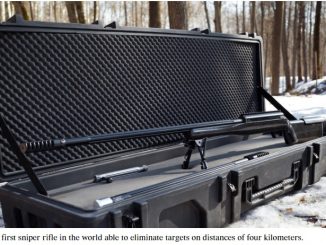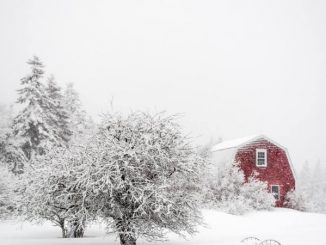
Winter presents unique challenges for everyone and everything, especially when you’re experiencing a “bombogenesis”. So, obviously having a working firearm is crucial in any situation. Ask the Marines at the Chosin Reservoir as their guns froze and ceased to function. Troops have long realized that harsh winters require special weapons attention. If you’re a shooter, prepper, or concerned at all about weapon’s maintenance you need to know how to deal with winter.
Step 1 – Some Lubes Suck
I won’t name names, but certain lubricants simply don’t work well in the winter and fall. Mostly those based on vegetable oils. These oils like to gum up when it gets cold and until your weapon gets hot these lubricants are quite worthless. So the first step is to get rid of these gummy lubricants. If you don’t, you risk weapon’s failure. Cleaning this gunk out of the small crevices of your gun is a real pain, but needs to be done.
Even petroleum based lubes can harden and became more of a hassle than a blessing. You see lubes are meant to function in extreme heat. Guns run hot, and lubricants are designed to function within that realm of heat and to reduce friction between metal on metal parts. They aren’t designed to last in cold weather… so they don’t.
Step 2 – Remove those Old Lubes
Simply not using these lubes isn’t enough. You need to strip your guns of every single bit of lube on them as winter starts. Get an old t shirt, cut it to pieces and start cleaning them. Really get in as deep as you can and get that gunk out of there. Believe it or not you can run a gun with extremely little lube. If you are firing hundreds of rounds at a time go ahead and lube the gun before you shoot. Just remember after using it go ahead and break the weapon down and strip the lube out of the weapon.
Now if you’re like me your hunting rifle isn’t likely to be fired a whole lot during the hunting season. It’s unlikely to become dirty and fired so many times I really need to worry about lubrication. If you aren’t shooting hundreds or thousands of rounds at a time the external cold weather is going to prevent the gun from getting too hot.
Step 3 – Condensation is the Enemy a.k.a. the Most Important Cleaning Step
Here is the real threat when it comes to winter maintenance. When you go out in the cold, sit in a tree stand, or deer blind things get cold. Your gun gets cold, you get cold, the world gets cold. So what do you do? You get warm? You head inside your home, the cabin, etc. Your nice warm escape from the frigid outdoors. While you warm up your gun is to and it’s experiencing condensation.
Condensation is what happens when you bring your gun in from the cold. Air carries moisture, and when it gets too cold the air can no longer contain the moisture. It builds up inside and outside of the gun and when it gets warm the moisture will materialize on the weapon, and inside the weapon. This isn’t a good thing.
The absolute best winter cleaning technique involves something quite simple. Disassemble the weapon and take a piece of cloth and dry it out. This piece of cloth needs to be clean and lubricant free. You need to dry the inside and outside of the weapon and make sure you keep condensation at bay. You want to get the outside, the inside and every single small part possible. You want to dry the gun within the first 5 minutes of bringing it into a warmer environment.
Step 4 – Don’t Forget the Ammo
Keeping the gun clean is one thing, but you need to keep the ammo clean and dry as well. In fact you need to inspect your ammo on occasion. The thin nature of brass means it’s easily cracked. Exposing thin metal to hot and then cold environments can cause some issues with cracking. You can also expect primers to pop out and bullets to take a weird angle in their cases
Inspect the ammo, make sure it’s normal and ready to rock and roll. Bad ammo could damage your gun, cause a jam, or simply go click when you really, really need a bang. Inspecting and making sure your ammo isn’t corroded or damaged is important. Wipe it down just like you wipe down your gun’s parts.
Step 5 – Inspect, inspect and inspect
Make sure that any rifle you’re keeping in storage is prepped for winter. Sure it may not be a gun you use daily, or one you use occasionally, but it should be prepped for winter. Clean the lube off, and at least once a week inspect the guns for moisture or rust. Take your time and check the inside and outside of every weapon. Taking 5 minutes to inspect and dry your guns will keep you from hours of scrubbing and rubbing out rust.
Winter is Coming
Winter is a big deal for a lot of people, and for gun people it creates specific challenges. Hunters, recreational shooters, and gun owners in general need to hit the ground running when it comes to winter firearm’s maintenance. Get ahead of the curve, and be ready for the snow, the sleet, and those subzero temperatures. Just remember step 3, keep your gun dry!
| [adrotate group=”4″] |
[adrotate banner=”24″]

[pt_view id=”517b65fj16″]
Widget not in any sidebars






Thank you for this info, I had never thought about the effects of weather on my guns.